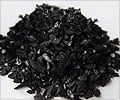
The researchers designed a study to capture the economic costs of component horticultural systems while conducting a "life cycle assessment" of the flowering tree 'Forest Pansy' (Cercis canadensis L.) The study incorporated partial budgeting modeling procedures to measure the sensitivity of related costs and potential benefits associated with short-run changes in cultural practices such as transport distance, postharvest activities, fertilization rates, and plant mortality.Analyses showed that total farm-to-gate-gate variable costs (the seedling, liner, and field production phases combined) was $37.74 per marketable tree; $9.90 for labor, $21.11 for materials, and $6.73 for equipment use, respectively. However, postharvest costs such as transportation, transplanting, take-down, and disposal costs added another $33.78 in labor costs and $27.08 in equipment costs, yielding a total cost from seedling to end-of-life of $98.60. Of the total variable cost, $43.68 was attributed to labor, $21.11 was spent on materials, and $33.81 on equipment use during the life cycle of each marketable tree.
Hall and Ingram say that the study shows life cycle assessment is an effective tool for helping nursery growers understand the inputs, outputs, and impacts of systems producing field-grown trees. "Our findings validate those of previous studies that found that input costs of production processes (machinery, water, fertilizers, pesticides, and energy) are a significant portion of the nursery variable operation costs. Thus, a more efficient use of these environmentally sensitive inputs cannot only reduce production costs for the nursery, but reduce their environmental risks or impacts as well."
Source-Eurekalert









